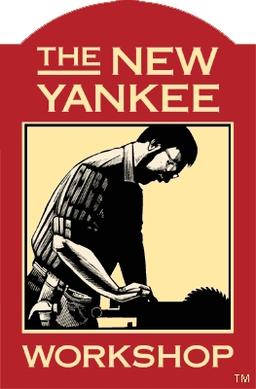I’d really love to start making something, even if it’s basic. Any tips on where to start? Tools, wood, etc?
If you are in the US, don’t trust any dimensions for wood. Buy a cheap caliper and measure to confirm. Personally, I prefer to work in metric to resist the urge to round to a nice fraction. That being said, measurements are always relative and wood is very forgiving so keep a few offcuts labeled and stored away to use as a reference.
As far as tools go: a cheap pull saw, square, hammer, and a steel straight edge will get you started. Harbor freight has some cheap entry level tools worth buying once to learn on. A drill would be my first power tool purchase if you don’t have one.
I sprang for a starrett combination square when I began my woodworking journey and it’s probably the single most useful tool I own.
It’s not necessary to have a square that precise, but knowing one part of the process is dead square is handy for figuring out where error comes from when there are issues
IF you have enough for a “full size” shop, including workbenches, a table saw, etc. Then I recommend Steve Ramsey (Woodworking for Mere Mortals). He has a lot of projects and shop tips for people just getting started. He also has a website that has a constantly updated buy list for how to build a shop on the cheap.
https://www.youtube.com/@SteveRamseyIF you are tight on space, but still want power tools, then Peter Millard (10 minute workshop) is a UK woodworker that does a lot of cabinetry and custom builds in a small basement UK shop. It’s really nice, and he even has a series of projects where he starts with just some super basic tools, and then makes slightly more complicated stuff every week.
https://www.youtube.com/@10MinuteWorkshopIF you want to try your hand at a no power tool shop (which can still be expensive to buy the stuff), then Paul Sellers is a great instructor. Most of his videos assume you don’t know anything and are just starting out.
https://www.youtube.com/@Paul.SellersFinally, Stumpy Nubs is a great channel for just general info, shop tips, and safe handling of tools. Just beware that he slips in a lot of “Just buy this one last thing from my affiliate link and it’ll solve all your problems.”
https://www.youtube.com/@StumpyNubsWood Whisperer, Tamar at 3x3 Custom, Lincoln St. Four Eyes, Izzy Swan, and a bunch of other channels are a lot of fun too, but most of them have moved into more of a “watch me make this awesome thing with my quarter million $$$ shop.”
This is a great list and a great summary. Steve Ramsey was a huge help for me starting out.
Great list at the bottom, too. Some others I recommend:
- Jonathan Katz-Moses (good testing and teaching)
- WoodWorkWeb (approachable, similar in some ways to Steve Ramsey).
Also Rex Krueger is worth having on the list https://m.youtube.com/@RexKrueger
Welcome to the community! I’m gratified and flattered that my project sent you over here, so I’ll try to point you to some good resources.
Information/How-To
As others have said, your local library likely has an entire shelf of woodworking books, that’s definitely worth checking out.
Youtube is a great resource here. There are lots of great woodworkers of all stripes posting useful and fun videos. Some excellent channels include:
-
The New Yankee Workshop. The classic PBS TV show starring Norm Abram is being officially uploaded to Youtube.
-
Stumpy Nubs. A tool tips sort of channel that offers quite a bit of practical advice.
-
3x3 Custom. The host, Tamar, tends to post project vlogs, things like “here’s how I built this bed frame.”
-
Wood By Wright How To. One of them hand tool purists who relies almost entirely on hand powered saws, planes, chisels and files to build his projects, occasionally allowing himself to use a modern power drill. He has a fun dad-joke style sense of humor and a lot of great videos on technique.
-
Woodshop Companion. Craftsman Nick Engler, author of many woodworking books, shares fun and practical tool techniques and projects.
Among many more, those are just some of my favorites.
Another great place for woodworking information is your local makerspace. Makerspaces come in all shapes and sizes, I was a member of one with a very complete wood shop, along with a membership full of craftsmen of all stripes who were excited to talk about their work.
Finally, of course, there’s this Lemmy community and its members.
Tools
You would be amazed what you can get done with a good hand saw, a few chisels, a block plane and a file or two. Though it can also be a pleasure to work with a garage full of power tools. Which way you go is up to you.
You can of course go spend a few grand down the tool aisle of your local home center, but that kind of outlay can be a bit much if you’re just starting out and aren’t sure if woodworking is for you or which direction you want to take your new hobby. Markerspaces/friends who are also into woodworking are again great resources here. You can find pretty good deals on tools at garage sales, estate sales, pawn shops, swap meets, thrift stores, hell your local library may have tools you can borrow.
Some of my tools I bought at Lowe’s, some of them I bought on Amazon, some of them have been in my family for generations, some of them I made myself.
The first thing I want you to put in your cart when you go shopping though is a good pair of safety glasses, and some hearing protection for power tools. If you’ve still got those cloth masks everyone had during the pandemic, I find those can be nice when sanding or otherwise creating a lot of dust.
Wood
Some folks break down pallets to get wood. Some folks buy 2x4s from the big box store and chop those up. An aisle or two over from the construction lumber you’ll find “project boards” which are a little better, but still not wonderful. I don’t want to steer you away from these sources of wood, because newcomers are often more willing to take chances, make mistakes and get messy with lumber like this, and the lessons you’ll learn the hard way from barely dried yellow pine are hard to teach otherwise.
You’ll want to find a proper lumber yard or sawmill in your area. It can be intimidating to walk into what seems like this huge, professional B2B operation and ask for three boards but they usually love to help. They usually stock wood that is rough cut with the idea that you’re going to surface it yourself, but for a fee they’ll surface it for you so you don’t have to invest in those tools or learn those techniques as you just get started.
It can be really intimidating to learn about all the different species of wood and their characteristics, but start with a few, learn to compare and contrast them, and then go from there. Pro tip: there is a type of maple that takes on these grey streaks that some people think are unsightly, so it’s sold for shockingly cheap as “paint-grade maple” or some such. This stuff is very nice to work with, a lot better than construction lumber, and very affordable.
Starter projects
You may have an idea for what you want to build, but if you’re thinking “I want to build [thing] but that feels complicated, what are some more beginner friendly projects to get me started?” here are a few ideas:
Repair or restore existing furniture. Find a crappy old dresser at a thrift store, clean it up, fix it up. Great project for learning about stain and finish, to practice sanding techniques etc.
Bookshelves. A lot of my earlier projects were bookshelves made of plywood. A great project for practicing with the table saw.
Cutting boards or coasters. Great projects for practicing jointing and panel glue-ups.
Work benches, jigs and tools. You can buy a workbench but it’s probably good practice to build one. You’ll need lots of jigs and fixtures that you can make yourself better than you can buy; I would never buy a taper jig, for example.
Keep in touch, let us know how you’re coming along. I hope you have lots of fun.
Thank you, and thanks to everyone else for the great suggestions! I have ideas for several projects, but def want to start with basic stuff and work my way up from there (and just use minimal tools for now until I decide that this is what I’m into).
-
I’m nowhere even remotely comparable to a proper furniture maker, but I can tell you some pitfalls to avoid.
Don’t cut wood without eyes, ears, and face protection. The dust, noise, or fumes will get you one day or another, if without protection. I prefer earmuffs over earplugs, but if earplugs then use the ones which tether both ends together. For a face mask, I like low-profile half-masks like this one: https://www.kleintools.com/catalog/respirators/p100-half-mask-respirator-sm
Resist the urge to dive into woodworking by starting with reclaimed wood. For example, pallets are a cheap/free source of material, but it’s a hodge-podge of different varieties, all riddled with nail holes, dents, and brown stains from rusty fasteners.
That’s not to say it can’t be done, but it certainly aggravates the process if you’re just starting. I once came across a section of 2x4 recovered from a pallet, thinking that it would cut just like the pine I was used to. Instead, it wrecked two drill bits and burned a circular saw blade as well as itself. I later mailed a sample of it to the USDA Wood Identification Public Service, who informed me that it was Acer (Hard Maple). Up until then, I didn’t even know that maple came in both varieties.
It seems hard maple is tougher than
nailsdrill bits. I’m still learning.White maple is my go-to for projects I want to keep. I love how clean it is and the large curvy grain patterns. Titanium bits and saw blades help and getting your saw blade sharpened after a couple of large projects is a good idea but you’re going to be burning through it a lot of the time even with high quality brand new cutting tools. I leave an 8th extra on and bring it down with a belt sander to deal with the burn marks. Downsize drill bits by one size and use a file for holes that you will be able to see into.
If you use reclaimed wood don’t assume all of the metal has been removed. Sometimes nails and screws break instead of working out and that can be easy to miss especially for someone checking a large amount of wood. If a saw blade hits a nail you potentially have a very dangerous projectile. Run a magnet over the wood while you’re marking your cuts to make sure. If you’re going to be working with reclaimed wood a lot a wand style metal detector is a good investment.
The funny thing is that a few months ago, I bought a wand metal detector at a ham radio swap meet for $20, as a gag. Now you’re telling me that it was actually a prudent investment toward my woodworking projects??
Win!
Why specifically tethered earplugs?
So that if one works it’s way out it doesn’t fall onto your freshly spread glue or bounce into a spinning saw blade.
This might be true, although I do it mostly so I can remove the earplugs and rest them around my neck if someone needs to talk to me.
The best PPE are the ones which have the fewest barriers toward using. Even the minor annoyance of having to set down untethered earplugs is best avoided, if it acts as a subconscious disincentive towards using PPE. Good safety policy adapts and accommodates this aspect of human behavior.
In a home workshop, there is no OSHA, so I’m fully responsible for my own safety protocols.
Unless you’re going the hand tool purist route, the table saw is IMO the central tool in the shop. It can rip, cross-cut, and cut joinery like dados and tenons. So you want a good one with a solid fence that won’t frustrate you. I haven’t been in the market for one in a while, so my suggestions will be out of date, but I’m sure others here can help you.
When you’re starting out you’ll probably be buying your wood S4S: surfaced four sides, so it’s smooth and pretty much ready to go. This is how all the wood at the big-box hardware stores comes. Wood from specialty dealers will come rough, and you can surface it yourself with the right tools ($$$) or have them do it for you for a fee ($).
It’s probably best to start with a project in mind, even if it’s shop shelving or something that doesn’t have to be heirloom-quality.deleted by creator
If your local library is no good, you can also try Project Gutenberg: https://www.gutenberg.org/ebooks/search/?query=woodworking. Has an exhaustively detailed book on joints in particular, plus an assortment of beginners’ manuals. A lot of hand tool stuff hasn’t changed all that much in the past century.
This might not be everyones opinion but my recommendation would be to get a plunge saw as your first tool. For me it was a big revelation that everything I built in shop class looked so terrible because we werent allowed to use power tools. Cutting a straight line with a hand saw is a skill that needs a lot of practice, same for joinery with chisels etc. But a plunge saw with track will give you very straight cuts for not so much money. And IMO it can do everything a table saw can do, just not as quickly (repeated cuts etc.) But on the other hand I think it makes more sense to get a decent plunge saw that you can keep for years and still use for breaking down sheets even when you decide you prefer a table saw rather than buying a cheaper job site table saw that you outgrow after a couple of years.
This, and a miter saw.
I use my plunge saw for so many things, BUT it does have limitations. I struggle making long narrow rip cuts, and repeatable cuts can be difficult without an MFT style workbench.
It can be a lot safer, cleaner, and easier than a table saw, ESPECIALLY for large panels, but it can’t entirely replace a table saw.
I do agree with this comment, and the 10 minute workshop YouTube channel has a lot of great tips on using a plunge saw (and recommendations on less expensive versions), but just be aware that it’s not a 1-1 replacement.
I agree, of course every tool has some limitations. I think a set of parallell guides can also make the plunge saw much more versatile without breaking the bank. And the set i have also works well for narrow rip cuts, exept when the piece is really small to begin with. And as you say an MFT is great for repeated cuts. As another comment mentiones together with a mitre saw and some jigs i think you could replace a table saw functionally, but its probably not the most efficient way of doing some things.
As another comment mentiones together with a mitre saw and some jigs i think you could replace a table saw functionally, but its probably not the most efficient way of doing some things.
With a track saw and a miter saw, I think you can say “I can crosscut, miter and rip.” But I don’t think you come close to matching the capability of a table saw.
I think a track saw really comes into its own when handling large panels or slabs. If you hand me one of those 2 inch thick slabs you’re making one of those trendy river tables out of and tell me to cut the live edge off of it and square it up, I’m not going to even try that with my table saw. Same with cutting some arbitrary diagonal line across a sheet of plywood.
Your average sliding compound miter saw is quite convenient but I don’t think as good as a table saw for crosscuts, miters, bevels or compound miters. Now mind you as a carpenter I’d happily show up to build a house with my miter saw and a normal circ saw and leave the table saw at home, but for woodworking I want extra accuracy and precision that I can get from a table saw and a good miter gauge or sled.
Things I think you would struggle to get done with only a miter saw and a track saw (or: why you’re probably going to get a table saw)
-
Ripping boards narrower than about 8 inches
-
Resawing
-
Non-through cuts such as grooves, dados, rabbets and tenons
-
Multi-purpose jigs such as taper jigs, sleds, tenoning jigs, panel cutters and the like. Try tapering table legs with a track saw. Actually don’t.
-
Job specific jigs and fixtures are possible but less useful.
-
Coving. If you haven’t seen this done go check out a video of someone cutting a cove with a table saw. It’s a hoot.
Not to mention that table saws are just more practical to set up for repeated operations/batch work
-
Yeah I would recommend a regular, good quality, Skil pattern circular saw over a track saw (which I believe is what you mean by “plunge saw”) as a first tool along with a decent straight edge clamp.
Track saws increasingly come with things like riving knives, anti-kickback features etc. but a beginner is unlikely to start with large slabs of lumber but rather plywood, which is less likely to pinch in the kerf and cause kickbacks. And in the event that “woodworking is not for me” a circ saw is perfectly viable for carpentry tasks as well.
I do suggest avoiding anything that purports to turn a regular circ saw into a track saw. Just learn how to run the foot against a straight edge.
I’m surprised by this answer! I’ve used standard circular saws for 30 odd years, but in the last few years I’ve used a couple of track saws, particularly a Makita system. I found them to be amazing. Fantastic accuracy, quicker setup, far superior dust extraction- made my old skilsaw look (and sound) like shit. Also, why wouldn’t you want a riving knife? It causes no hindrance and helps avoid accidents. Genuinely curious.
Nothing against track saws at all, they’re excellent tools. My point is, if I had no tools, and I was going to buy one powered wood saw, it would be an ordinary circular saw.
For instance, what’s it like cross-cutting a 2x4 with a track saw?
Same as doing it with a regular circular, you just don’t use the track.
Start with a modest goal and do some research on the tools you would need to build it. Assess the space you have available and adjust your goal and/or your tool selection accordingly. Go find those tools second-hand (Craigslist, etc.). I think just about every power tool you would need for furniture making will require calibration so learn how to do it properly and actually take the time to do it. Eye protection, a respirator, and probably hearing protection are a must. Share your work on here!
I’d recommend the following set of tools:
- Cordless drill (any major brand is fine, I like Milwaukee)
- Hand pull saw (whatever is fine)
- Set of decent chisels (Narex is great value)
- Corded circular saw (Makita 5007F is a great choice)
- Random orbital sander (DeWalt has some fairly good budget models)
- Clamps, clamps, more clamps
Most of all though, get good wood. I actually strongly recommend starting with plywood primarily if you don’t have access to quality lumber since you won’t have to do any surfacing.
On a related note, anyone got any tips on the design process? Do you guys just try to copy things that catch your eye or how do you choose what to make?
The easiest way to learn how to design furniture is to copy existing designs, then tweak them slightly to better fit your style. After a while, you’ll learn how to incorporate different designs into a nearly original piece.
Copy copy copy until you understand what you like, and what works functionally.
It’s not that difficult to find plans available either for free or for sale on the internet, though I have yet to build a furniture project straight from plans. I’ll usually come up with something I want to build, and I’ll look at pictures, watch build videos, maybe find plans, and then I’ll design my own version in FreeCAD.
I tend to start in the spreadsheet workbench and list things like stock dimensions, pertinent detail dimensions and such, derive certain dimensions, I like to keep as much math in the spreadsheet as possible, and then I use the sketch > Part Design workflow to create the parts and the A2Plus workbench to assemble them. Creating a 3D model is often a sanity check to make sure all the parts fit together, I sometimes don’t bother to model all parts or I’ll only do half of a symmetrical assembly. I used to make drawings to print with the TechDraw workbench but for my purposes in the shop I stopped doing this as I would just work from the spreadsheet. If I was sharing my plans with others I would make more careful drawings.
This of course allows you to tailor the work to your space and you.






